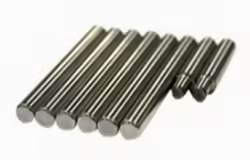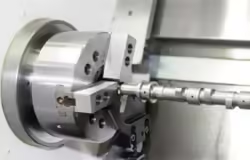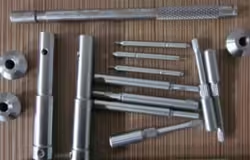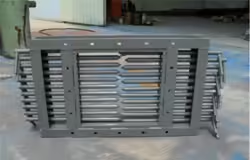
Exploring 1020 Steel Equivalent Materials for Projects
Table of Contents
Introduction
Steel is a critical material in construction and manufacturing, renowned for its strength, durability, and versatility. Among the various types of steel, 1020 steel stands out for its excellent mechanical properties and wide-ranging applications. However, there are situations where you may need to consider alternatives to 1020 steel. This article explores 1020 steel equivalent materials, helping you make informed decisions for your projects.
Understanding the equivalents of 1020 steel can provide insight into their applications, properties, and advantages, allowing you to choose the right material for your specific needs.
What is 1020 Steel?
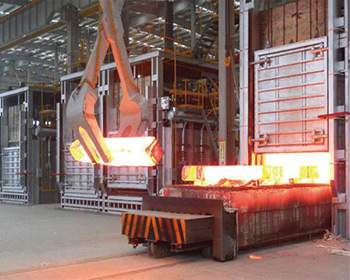
1020 steel is a low-carbon steel with a carbon content of approximately 0.20%. It is classified as a medium tensile steel and is often used in applications requiring good weldability and machinability. Key properties of 1020 steel include:
- Tensile Strength: Typically ranges from 350 to 500 MPa (51,000 to 72,500 psi).
- Yield Strength: Generally between 210 to 300 MPa (30,000 to 43,500 psi).
- Ductility: Excellent ductility allows for deformation without breaking.
- Hardness: Can achieve a Rockwell hardness of approximately 70 B (Brinell hardness 125).
Due to its balanced composition, 1020 steel is commonly utilized in the automotive, manufacturing, and construction industries for parts such as gears, shafts, and bolts.
Understanding 1020 Steel Equivalent Materials
What Are Steel Equivalents?
Steel equivalents refer to materials with similar chemical compositions and mechanical properties. Understanding steel equivalents is crucial for ensuring compatibility in applications where specific steel grades may not be readily available. Various industry standards exist to define these equivalents, including ASTM, SAE, and EN specifications.
Common 1020 Steel Equivalent Materials
Several steel grades are considered equivalents to 1020 steel. Below is a table detailing these materials along with their specifications and applications.
| Material | Standard | Chemical Composition | Typical Applications |
|---|---|---|---|
| A36 Steel | ASTM A36 | C: 0.26%, Mn: 0.60-0.90% | Structural steel in buildings and bridges |
| S235JR | EN 10025 | C: 0.22%, Mn: 1.40% | General structural applications |
| C45 Steel | DIN C45 | C: 0.45%, Mn: 0.60% | Machinery components, axles, and gears |
| 1018 Steel | ASTM A108 | C: 0.18%, Mn: 0.60-0.90% | General manufacturing and machining applications |
| 1025 Steel | ASTM A519 | C: 0.25%, Mn: 0.60-0.90% | Shafts, gears, and automotive parts |
This table provides an overview of some of the common 1020 steel equivalent materials, showcasing their specifications and typical applications in various industries.
Applications of 1020 Steel and Its Equivalents

Automotive Industry
In the automotive sector, 1020 steel and its equivalents are often used in the manufacture of components that require good strength and ductility. Examples include:
- Axles: The durability of these materials makes them ideal for high-stress applications.
- Transmission parts: Parts must withstand high forces and provide reliable performance over time.
Construction
Steel equivalents like A36 and S235JR are prevalent in construction due to their structural properties. Common applications include:
- Steel beams: Used in the framework of buildings and bridges.
- Reinforcement bars: Providing additional strength to concrete structures.
Manufacturing
The manufacturing sector uses 1020 steel equivalents for various components. Key applications include:
- Machinery parts: Such as gears and shafts, where strength and wear resistance are critical.
- Fasteners: Bolts and screws made from these materials ensure reliability in assembly.
Machining
Materials like 1018 steel are widely used in machining applications. The reasons include:
- Good machinability: This allows for precise shaping and cutting.
- Availability: 1018 is commonly stocked and readily available.
Oil and Gas Industry
The oil and gas industry often utilizes 1020 steel equivalents for their strength and resistance to impact and fatigue. Typical applications include:
- Pipelines: For transporting crude oil and natural gas.
- Structural supports: Ensuring stability in drilling operations.
Choosing the Right Equivalent Material for Your Project

When selecting a steel equivalent for your project, consider the following factors:
Mechanical Properties
Ensure that the equivalent material meets or exceeds the mechanical properties of 1020 steel, such as tensile strength and yield strength.
Chemical Composition
Review the chemical composition to ensure compatibility, particularly for applications requiring specific corrosion resistance or strength characteristics.
Cost and Availability
Evaluate the cost and availability of the equivalent materials. While some alternatives may offer similar properties, they might be more readily available or cost-effective.
Industry Standards
Ensure that the chosen material complies with relevant industry standards and certifications. This is especially important in regulated industries like aerospace and automotive.
Application Requirements
Consider the specific requirements of your application, including load-bearing capacity, environmental conditions, and potential wear factors.
Conclusion
Understanding 1020 steel and its equivalents is vital for making informed decisions in construction, manufacturing, and other industrial applications. By recognizing the properties and applications of various steel grades, you can select the most suitable material for your specific needs. Whether it’s for automotive components, structural steel, or manufacturing processes, knowing your options will help you achieve successful project outcomes.
FAQ
What are the common 1020 steel equivalents?
1020 steel equivalents include materials such as A36 steel, S235JR, C45 steel, 1018 steel, and 1025 steel. These alternatives share similar mechanical properties and chemical compositions.
How can I verify if a steel grade is a 1020 steel equivalent?
To verify if a steel grade is a 1020 steel equivalent, compare its chemical composition and mechanical properties, such as tensile strength and yield strength, to those of 1020 steel.
Why is it important to consider 1020 steel equivalents?
Considering 1020 steel equivalents is important for ensuring that your project meets performance requirements while potentially offering cost savings or improved availability.
Can A36 steel be used as a 1020 steel equivalent in structural applications?
Yes, A36 steel can often be used as a 1020 steel equivalent in structural applications, as they exhibit similar mechanical properties. However, always assess the specific requirements of your project.
Are the heat treatment processes for 1020 steel and its equivalents similar?
Generally, the heat treatment processes for 1020 steel and its equivalents can be similar. However, it’s important to consult specific guidelines for each 1020 steel equivalent.
How do the mechanical properties of 1020 steel compare to its equivalents?
1020 steel typically has a tensile strength of 350-500 MPa and a yield strength of 210-300 MPa. Its equivalents, such as C45 and A36, may vary in properties, so it’s crucial to check the specific data for each 1020 steel equivalent.
In what applications is 1020 steel preferred over its equivalents?
1020 steel is often preferred in applications that require excellent machinability and ductility, such as in automotive components, while equivalents may be selected for cost or availability reasons.
What should I consider when selecting a 1020 steel equivalent for my project?
When selecting a 1020 steel equivalent, consider mechanical properties, chemical composition, cost, availability, and compliance with relevant industry standards.
Is it feasible to weld 1020 steel and its equivalents?
Yes, both 1020 steel and its equivalents, like A36 steel, are weldable. Proper welding techniques and preheat procedures should be followed to prevent issues such as cracking.
How does the corrosion resistance of 1020 steel compare to its equivalents?
1020 steel generally has moderate corrosion resistance, which may be similar to some 1020 steel equivalents. Specific grades may offer better resistance, so consider protective coatings or treatments in corrosive environments.

